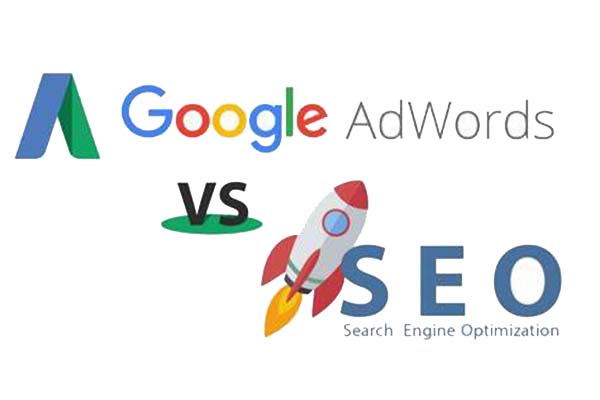In today’s fiercely competitive online world, Search Engine Optimization (SEO) has become a crucial factor for the success of any website. Whether you’re running a personal blog, an e-commerce platform, or a corporate website, understanding and applying the fundamentals of SEO can help you enhance your website’s visibility and traffic.
Keyword Research and Optimization
Keyword Research: Start by using keyword research tools like Google Keyword Planner, Baidu Index, Semrush, and others to understand potential keywords related to your website. Choose keywords with high search volume and strong relevance to your website’s theme.
Title Optimization: Incorporate important keywords into your page titles to inform search engines about the content covered on those pages. Ensure your titles are attention-grabbing, appealing, and accurately depict the content.
Content Optimization: Naturally integrate relevant keywords into your article or page content. However, avoid overloading content with keywords; prioritize content quality and reader experience. Craft valuable, original, and reader-friendly content to fulfill user needs.
Description Tag Optimization: Utilize meta description tags to provide concise yet accurate descriptions of your page content, including essential keywords. This helps attract user clicks and boosts search engine rankings.
Image Optimization: Add appropriate file names and alt attributes to images, describing their content and including relevant keywords. This helps search engines understand images and connect them to your website’s theme.
URL Optimization: Employ a concise, clear URL structure that includes keywords. Avoid dynamic parameters and meaningless numbers or characters.
Content Quality and Value
Audience Research: Understand your target audience, their needs, and interests. Gather information about your audience through market research, user feedback, or data analysis.
Provide Useful Information: Ensure your content solves problems, imparts valuable knowledge, or meets the needs of your audience. Deeply research relevant topics and offer detailed, accurate, and easy-to-understand information.
Create Original Content: Strive to provide unique and original content that attracts readers and sets you apart from competitors. Avoid merely copying content from other sources; focus on sharing your perspectives, insights, and experiences.
Clear Content Structure: Organize content with appropriate headings, paragraphs, and sections for readability and comprehension. Use visual elements like lists, charts, images, or videos to enhance presentation.
Website Structure and Navigation Optimization
Clear Navigation: Ensure your website has a clear and concise navigation bar that quickly directs users to their desired pages. Use clear labels and logical structures for navigation menus, avoiding excessive sub-menus.
Consistency and Predictability: Maintain consistent overall website style and layout, enabling users to easily locate desired information. Create an expectation for layout, style, and interaction across different pages to enhance user experience.
Effective Search Functionality: Provide a functional and user-friendly search feature for quick content discovery. Place the search box prominently and incorporate features like relevant keywords, auto-complete, or search suggestions.
Clear Page Hierarchy: Divide website content into distinct topics or categories and establish a clear hierarchical structure. Reflect relationships between pages through appropriately named URLs, folders, and subdirectories for search engine and user understanding.
Internal and backlinks
Internal Linking Optimization:
Establish Relevance: Create meaningful internal links between different pages on your website to establish relevance. This helps search engines comprehend your website’s structure and enhances page connections.
Use Keyword Anchor Text: Utilize keywords relevant to the target page’s content as anchor text for internal links. This aids search engines in understanding the target page’s topic and improves its ranking in search results.
Avoid Excessive Linking: Refrain from adding an excessive number of internal links on a single page to prevent user confusion. Optimize only the most crucial and relevant links.
Create Navigation Menus: Use navigation menus to organize and link different sections of your website. Ensure these menus are concise and direct users clearly through the site.
Backlinks Optimization:
High-Quality BackLinks: Strive to acquire Backlinks from high-quality, authority websites. These links can elevate your website’s ranking in search engine results and increase traffic.
Utilize Social Media Platforms: Leverage social media platforms to share and promote your website’s content. Engage with other websites to gain more external links.
Build Partnerships: Establish collaborations with websites within your relevant industry to share links. This helps boost your brand exposure and enhance search engine trust in your website.
Offer Valuable Contributions: Provide valuable content to other websites, such as guest articles or participating in themed interviews. This can earn you more external links and brand exposure.
Regular Updates: Maintain frequent updates and optimizations on your website’s content to attract more external links. Intriguing, valuable, and unique content will catch the attention of other websites for referencing and linking.
Mobile-Friendliness Optimization
Optimizing mobile-friendliness ensures your website offers a pleasant user experience on mobile devices. Here are some suggestions to optimize mobile-friendliness:
Responsive Design: Implement responsive design to ensure your website adapts to different screen sizes and resolutions on various devices. This provides a consistent, readable, and navigable interface whether accessed on phones, tablets, or desktops.
Fast Loading Speed: Mobile devices often have slower network connections, so ensure your website loads quickly on such devices. Optimize images and file sizes, compress code, enable browser caching, and take other measures to enhance loading speed.
Simplified Layout: Due to limited space on mobile devices, simplify page layouts and ensure content remains clear and readable. Avoid excessive images, complex tables, and large blocks of text to prevent difficulty in reading and browsing.
Large Buttons and Clickable Elements: Considering the smaller size of mobile screens, use appropriately large and easily clickable sizes for buttons and other interactive elements. This prevents accidental clicks and improves user interaction.
Streamlined Navigation and Search: Optimize navigation and search functionalities on mobile devices for easy use and operation. Employ clear icons, dropdown menus, and other elements for simplified navigation, and provide convenient search options.
Minimize Flickering and Pop-ups: Avoid excessive use of blinking effects or pop-ups on mobile devices, as they can distract users and impact page loading speed.
Meta Tag Optimization
Page Title (Title): Ensure each page has a unique, descriptive, and content-relevant title. Incorporate primary keywords into the title and limit its length to around 50-60 characters.
Meta Description: Use meta description tags to define brief, enticing descriptions of your pages. Descriptions should be concise, attract user clicks, and include keywords. Aim to limit description length to 150-160 characters.
Canonical URL: For pages with similar or identical content, use canonical tags to indicate the preferred version to search engines. This helps prevent duplicate content issues.
Mobile Friendliness (Viewport): Use viewport tags to optimize display on mobile devices. This tag ensures proper scaling and layout of web pages across various screen sizes.
Semantic Tags: Employ appropriate HTML semantic tags to emphasize webpage structure and content.
Image ALT Attribute: Add meaningful ALT attributes to images on your page. This aids search engines in understanding image content and provides assistive information to visually impaired users.
Language Setting: Use the lang attribute to specify the language used on the page. This assists search engines in correctly identifying and displaying language-related results.
Conclusion
Employing these 6 key strategies for SEO optimization can significantly improve your website’s ranking and visibility in search engine results. If you need more professional SEO services, you can visit googleseoexpert.com for more tips.






